You’re walking on a forest path, admiring the walls of trees alongside you. The fresh air, the chirping birds, the crunch of moss and fallen leaves underneath your feet, the distant gurgling of a stream. It’s paradise on earth. A moment of stillness. A time for…what in the heck is that?!
Strange is an understatement, but calling it weird is mayhaps rude. Fact is—Mother Nature has created a plethora of different living beings, and you’ve now come across not one, not two, but dozens of them! The Instagram page @strangest_wildlife has been sharing, well, the strangest bits of wildlife.
From fluffy to spiky to utterly adorable, and to those that look like your sleep paralysis demon, this page has ‘em all, and we at Bored Panda are privileged to be sharing them with you, our dearest little Pandas. Make sure to vote on your favorites and leave your comments below! Let’s enter this forest of feverish daydreams!
#1 The Long-Eared Jerboa Is A Nocturnal Mouse-Like Rodent With A Long Tail, Long Hind Legs For Jumping, And Exceptionally Large Ears. Very Little Is Known About The Species
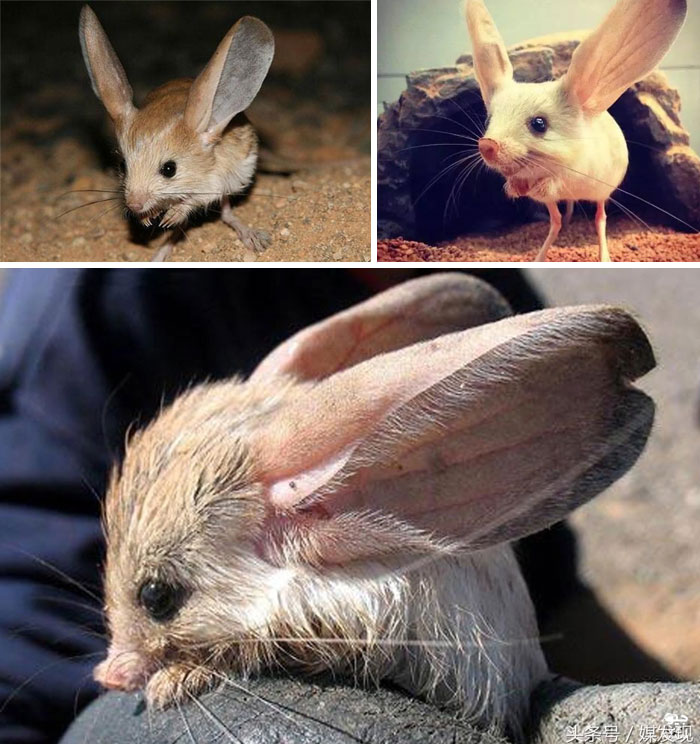
Image credits: strangest_wildlife
Some call them mistakes, Bob Ross calls them happy accidents, but this Instagram page just went the direct route—World’s Strangest Wildlife. It leaves no room for debate as to what you’ll be getting, but the actual critters may leave you more than thoroughly intrigued.
From land to sea, the page is dedicated to sharing “the most rare, beautiful, and strangest creatures and plants of the world,” as said in the bio. So far, they’ve accumulated 5,690 followers eager to get their dose of Mother Nature’s experimental laboratory of secretive creations.
Although these creations may seem intriguing, albeit a little unusual, one must not forget that nature is never black and white; there are a lot of secretive behaviors that wildlife partake in whilst we’re sitting at our desks at work, unaware of the magic.
#2 Quokka: Deemed The World’s Happiest Animal, The Quokka Is Also Known As The Short-Tailed Scrub Wallaby
It is a small macropod about the size of a domestic cat. It is the only member of the genus Setonix. Like other marsupials in the macropod family (such as kangaroos and wallabies), the quokka is herbivorous and mainly nocturnal
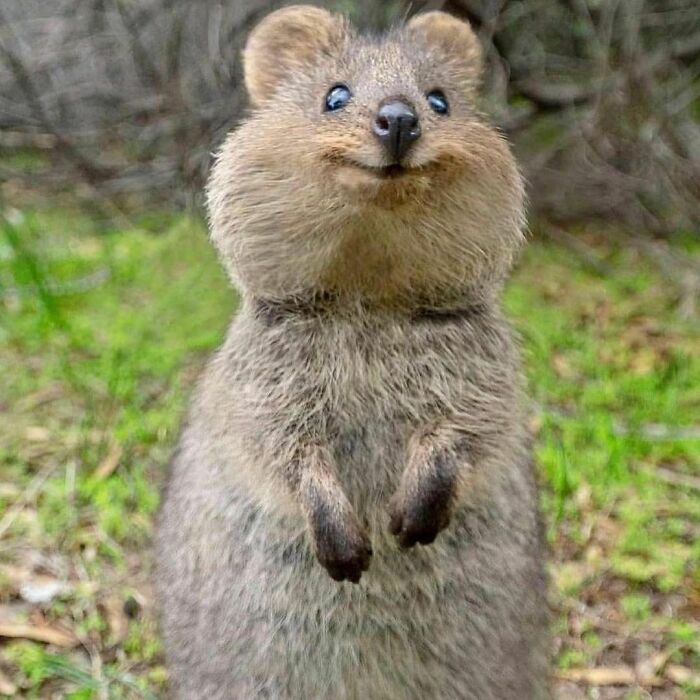
Image credits: strangest_wildlife
#3 Mary River Turtle: The One With The Green “Mohawk” Hair (Actually Algae) Is An Australian Species That Split From Other Living Species About 40 Million Years Ago
It has special organs in its cloaca that allow it to draw oxygen from the water. It can stay underwater for up to three days
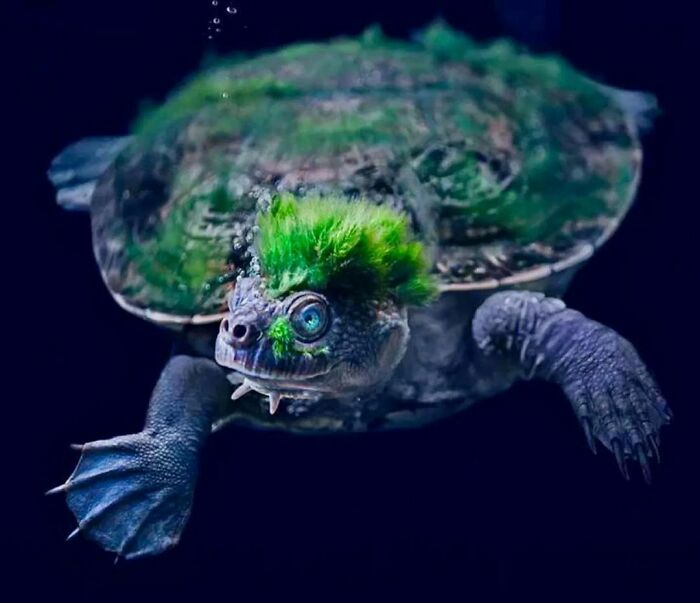
Image credits: strangest_wildlife
Fact Animal, authored by Dan Sharp, a UK-based animal expert, enthusiast and researcher, has made a list of 101 of the greatest animal facts, so I think these will pair very nicely with all of the strange and wondrous pictures you’re already enjoying.
Can you believe that the loudest animal in the world is a mere 2 cm long (0.78 inch) prawn? The pistol shrimp is capable of snapping its claw shut so rapidly that it creates a bubble which collapses to produce a sonic blast, louder than a Concorde’s sonic boom. The shock wave can reach 230 decibels, which is louder than the sound of a gunshot.
#4 Frogmouth Bird: They Are Named For Their Large Flattened Hooked Bill And Huge Frog-Like Gape, Which They Use To Capture Insects
Their flight is weak. They rest horizontally on branches during the day, camouflaged by their cryptic plumage. Up to three white eggs are laid in the fork of a branch, and are incubated by the female at night and the male in the day
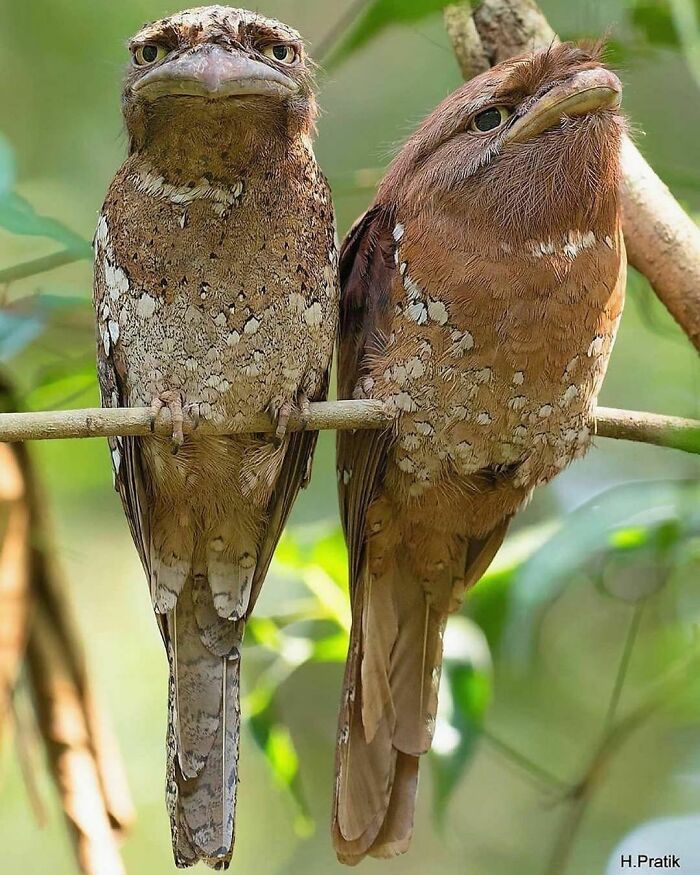
Image credits: strangest_wildlife
#5 Dumbo Octopus
The name "dumbo" originates from their resemblance to the title character of Disney's 1941 film Dumbo, having a prominent ear-like fin which extends from the mantle above each eye. There are 15 species recognized in the genus. Prey include crustaceans, bivalves, worms and copepods. The average life span of various Grimpoteuthis species is 3 to 5 years
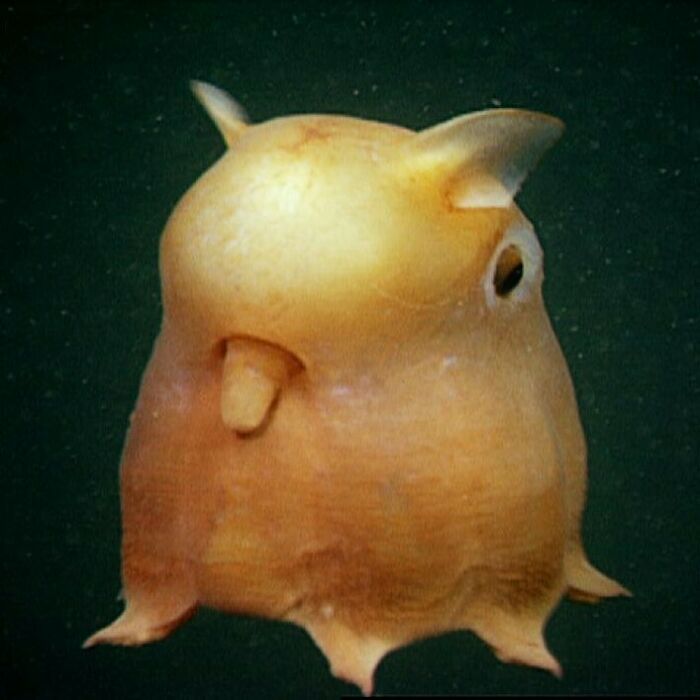
Image credits: strangest_wildlife
#6 The Sarcastic Fringehead, Neoclinus Blanchardi, Is A Small But Ferocious Fish Which Has A Large Mouth And Aggressive Territorial Behavior, For Which It Has Been Given Its Common Name
When two fringeheads have a territorial battle, they wrestle by pressing their distended mouths against each other, as if they were kissing. This allows them to determine which is the larger fish, which establishes dominance
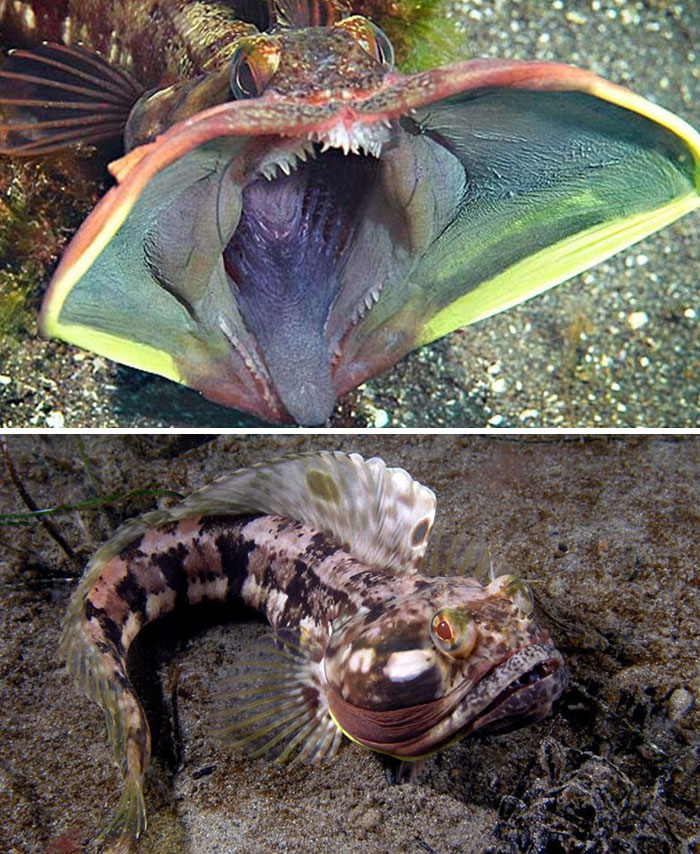
Image credits: strangest_wildlife
What if I told you that the world’s deadliest animal isn’t a shark, bear, or tiger, but a mere mosquito? According to the World Health Organization, 725,000 people are killed each year by mosquito-borne diseases such as malaria, dengue fever, and yellow fever.
To prevent yourself from falling prey to these annoying buzzing critters, Mass.gov recommends using insect repellents any time you are outdoors, wearing long-sleeved clothing, repairing damaged window and door screens so those pesky buggers can’t get in, and removing any standing water sources from around your home, so they can’t breed.
#7 Black And Rufous Elephant Shrew: One Of The 17 Species Of Elephant Shrew Found Only In Africa
The Black And Rufous Elephant Shrew,(Rhynchocyon Petersi) The Black And Rufous Sengi, Or The Zanj Elephant Shrew, is native to the lowland montane and dense forests of Kenya and Tanzania. Like other members of the genus Rhynchocyon, it is a relatively large species, with adults averaging about 28 cm (11 in) in length and 450-700 g (1.0-1.5 lb) in weight
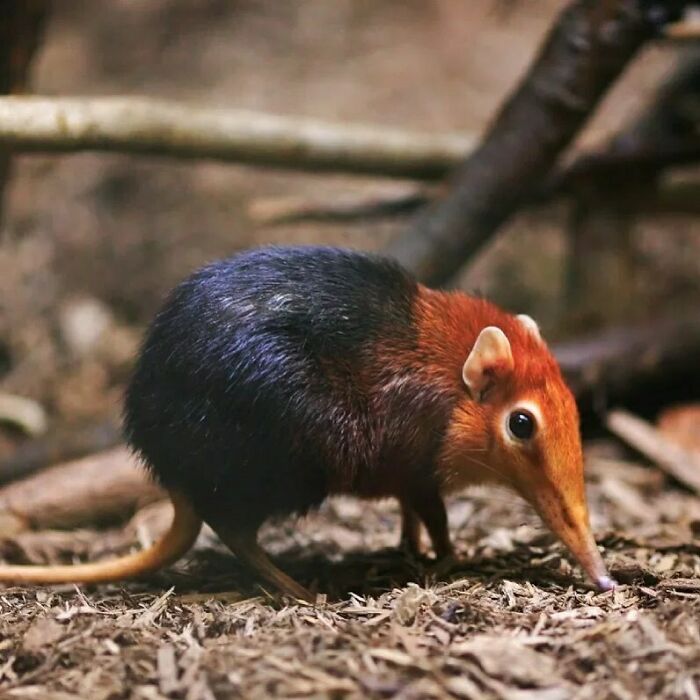
Image credits: strangest_wildlife
#8 The Pallas's Cat (Otocolobus Manul), Also Called Manul, Is A Small Wild Cat With A Broad But Fragmented Distribution In The Grasslands And Montane Steppes Of Central Asia
It is negatively affected by habitat degradation, prey base decline, and hunting, and has therefore been classified as Near Threatened by IUCN since 2002. The Pallas's cat is about the size of a domestic cat. The combination of its stocky posture and long, dense fur makes it appear stout and plush
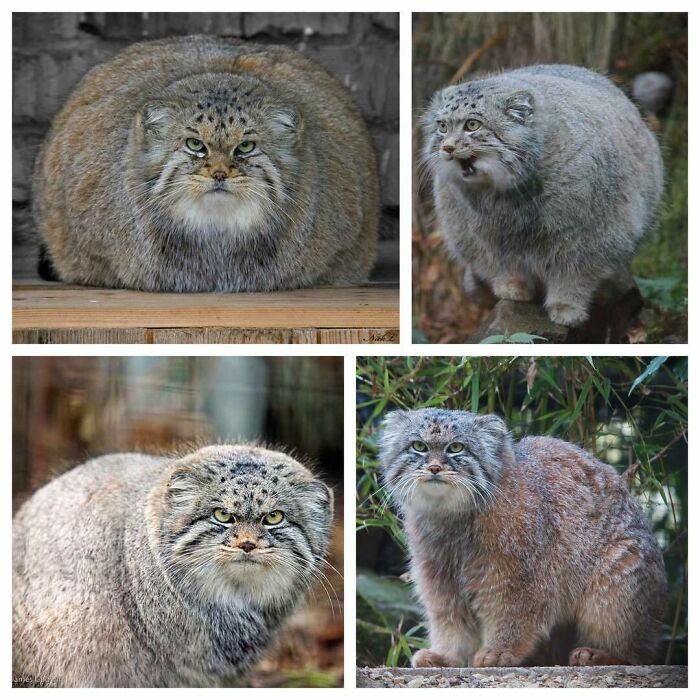
Image credits: strangest_wildlife
#9 Harpy Eagle: The Harpy Eagle (Harpia Harpyja) Is A Neotropical Species Of Eagle
It is also called the American harpy eagle to distinguish it from the Papuan eagle, which is sometimes known as the New Guinea harpy eagle or Papuan harpy eagle. It is the largest and most powerful raptor found throughout its range, and among the largest extant species of eagles in the world. It usually inhabits tropical lowland rainforests in the upper (emergent) canopy layer
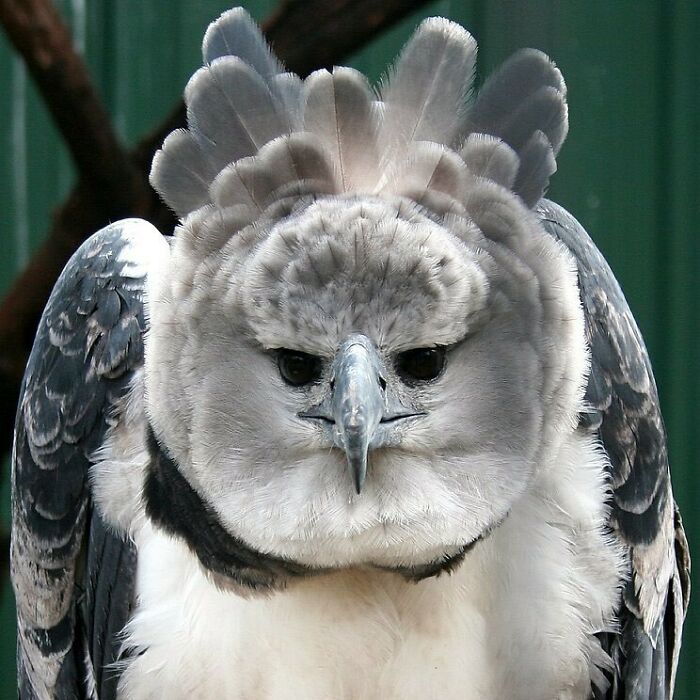
Image credits: strangest_wildlife
Getting back to interesting animal facts: Flamingos are not pink. They are born gray; however, their diet of brine shrimp and blue-green algae contains a natural pink dye called canthaxanthin that makes their feathers pink. Wish we as humans could just eat something and change color–oh wait, we can!
Eating too many carrots can turn your skin orange. “Carrots can, in fact, cause an orangish yellow skin pigmentation,” says Dr. Lady Dy, a dermatologist with the Advocate Lutheran General Hospital in Park Ridge, Illinois. “It’s called carotenemia and is often most noticeable on thick skin like the palms of your hands or the soles of your feet.”
The orangish-yellow discoloration is a result of excess beta-carotene in the blood. Other foods that can cause increased pigmentation include squash, sweet potatoes, cantaloupe, and even dried apricots. All these foods are high in beta-carotene. So if you’ve always wanted to be a Simpsons character, there is still hope for you!
#10 Native To A Remote Region Of China, This Tiny Mammal, Known As The Ili Pika, Doesn't Know It's A Member Of An Endangered Species, And Neither Do Most People
Rarer, and some would argue cuter, than the panda, there are less than 1,000 of these teddy bear-like creatures living in the Tianshan mountain range in the Xinjiang region of northwestern China, says conservationist Li Weidong. It was photographed for the first time in two decades last year (2014)
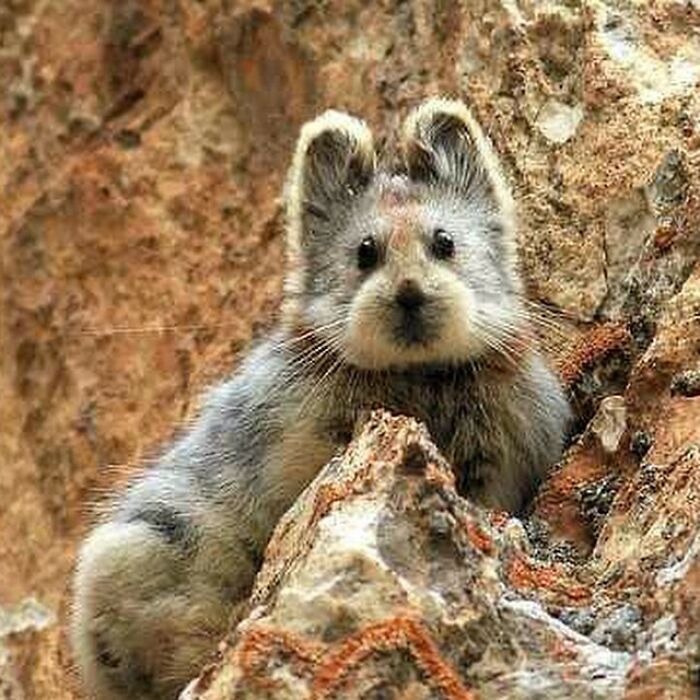
Image credits: strangest_wildlife
#11 Mantis Shrimp Or Stomatopods Are Marine Crustaceans, The Members Of The Order Stomatopoda
Most species can grow to around 10 centimetres (3.9 in) in length, though a few species reach up to 38 cm (15 in). The largest ever caught has a length of 46 cm (18 in) in the Indian River near Fort Pierce, Florida of USA. They sport powerful claws that they use to attack and kill prey by spearing, stunning, or dismemberment. In captivity, some larger species are capable of breaking through aquarium glass with a single strike
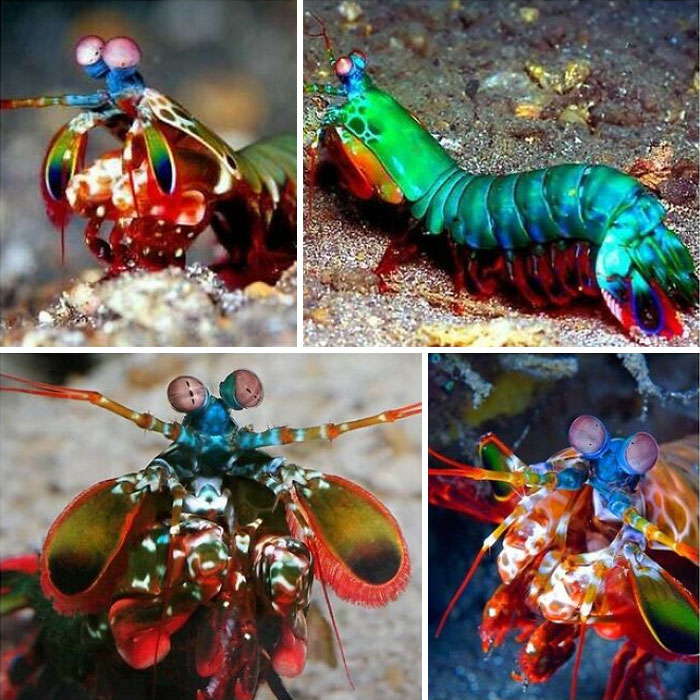
Image credits: strangest_wildlife
#12 The Kakapo Is A Critically Endangered Species With Only About 125 Left
It has finely blotched yellow-green plumage, a distinct facial disc of sensory, vibrissa-like feathers, a large grey beak, short legs, large feet, and wings and a tail of relatively short length. A combination of traits make it unique among its kind; it is the world's only flightless parrot, the heaviest parrot, nocturnal, herbivorous, has a low basal metabolic rate and no male parental care, and is the only parrot to have a polygynous lek breeding system. It is also possibly one of the world's longest-living birds
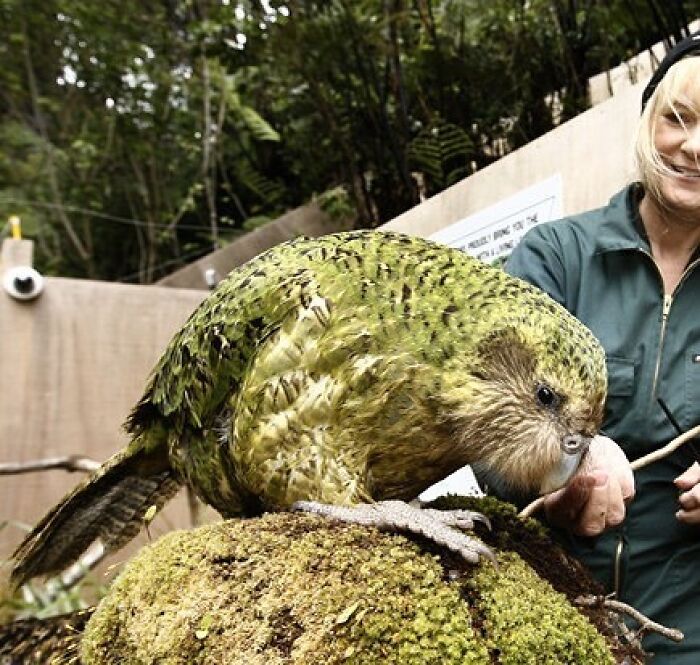
Image credits: strangest_wildlife
The last interesting fact about the animal kingdom comes from McGill University. Back in 1996, it was found that koalas have a lot more in common with us humans than meets the eye. Their fingerprints very closely resemble those of humans, which is exceptionally interesting as koalas are evolutionarily distant from humans.
It turns out that fingerprints are an excellent example of convergent evolution, or different species developing similar traits independently from each other. They seem to serve two purposes: First, they aid in grip; Second, they increase the sensitivity of touch, allowing for a finer level of perception.
Police aren’t exactly worried about koala bank robbers, but it is possible that koala fingerprints could be found incidentally at a crime scene and be mistaken for a human’s, making it pretty difficult to find a match. Good thing koalas can’t read, otherwise this might lead to an increase in bank robberies. Tough times for us all, innit?
#13 The Okapi Is A Giraffid Artiodactyl Mammal Native To The Northeast Of The Congo In Central Africa
Although the okapi bears striped markings reminiscent of zebras, it is most closely related to the giraffe. The okapi and the giraffe are the only living members of the family Giraffidae. It has a long neck, and large and flexible ears. Its coat is a chocolate to reddish brown, much in contrast with the white horizontal stripes and rings on the legs and white ankles
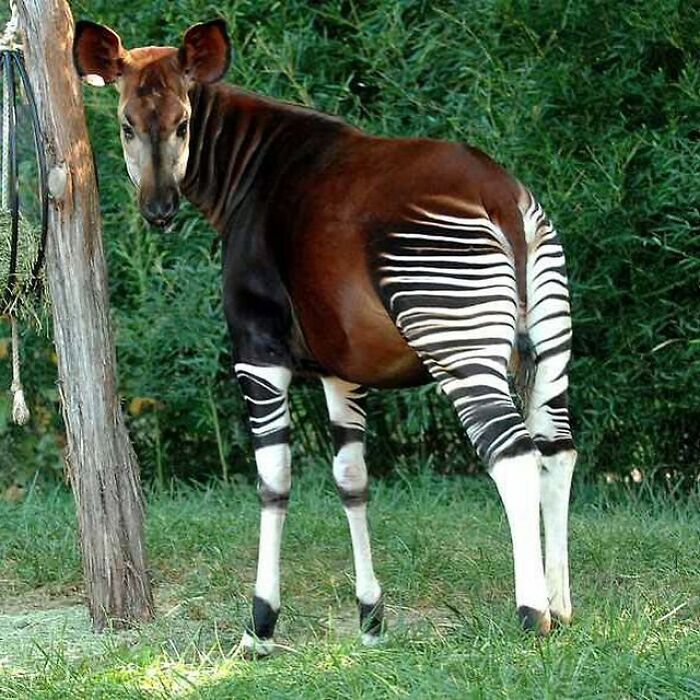
Image credits: strangest_wildlife
#14 Maratus Volans: Commonly Known As The Peacock Spider, Due To The Brightly Colored, Circular Flap In The Male’s Abdomen
Just like an actual peacock, the male of this diminutive species raises this flap like a colorful fan and uses it to catch the female’s attention (they have extremely acute eyesight, as do most jumping spiders); it also vibrates its hind legs and abdomen for a more dramatic effect. Another common trait with the peacock is that the male Maratus will sometimes court several females at the same time. Until recently, it was thought that the male peacock spider was capable of gliding through the air; according to some, it would extend the flap when leaping, and therefore increase its jumping distance, hence its name (volans means “flying”). Today we know that the flap is for display purposes only. But that doesn’t make it any less awesome
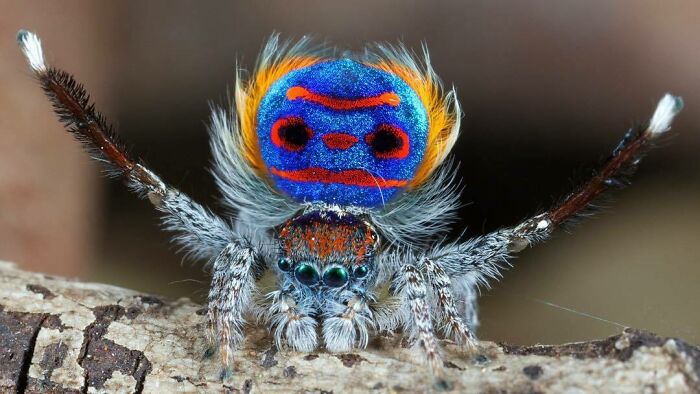
Image credits: strangest_wildlife
#15 This “Troll-Haired” Bug Is One Of The Coolest-Looking Insects We’ve Ever Seen
The tiny unidentified creature, which is only 5 millimeters long, was found in the Suriname rainforest by ecologists who discovered 60 new species on a research expedition in 2012. This photo of the planthopper was featured on National Geographic. The bug’s wild “hairdo” is actually waxy secretions from its abdomen that are thought to be a defense mechanism to distract predators from its more vulnerable parts, according to conservation biologist Trond Larsen. “It could be that they fool a predator into attacking the wrong part of the insect, and the wax breaks off while the insect jumps to safety,” The rainforest in southern Suriname is “among the most remote and unexplored tracts of rainforest left on the earth."
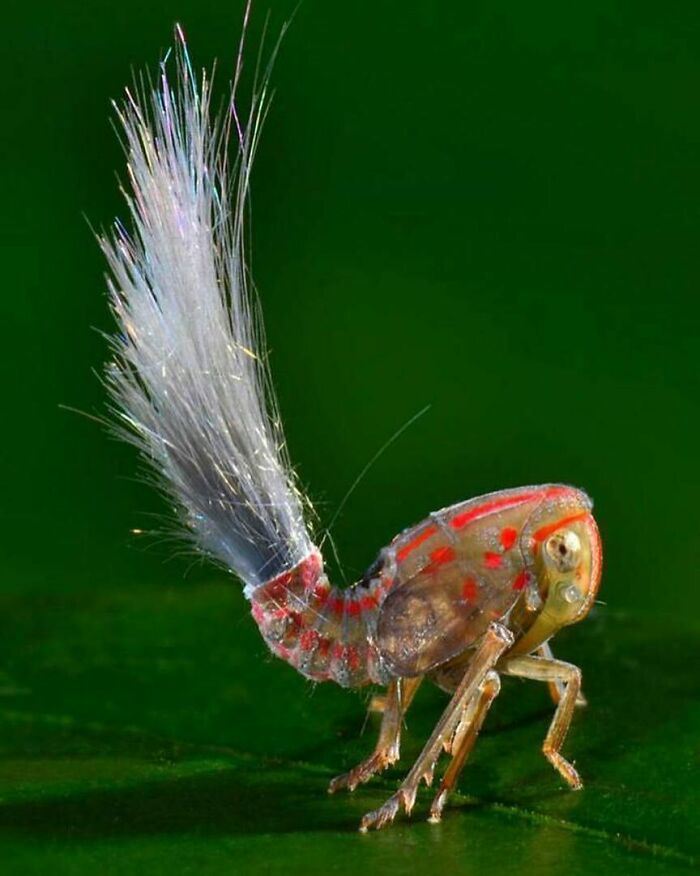
Image credits: strangest_wildlife
Regardless of it all, the strange facts and the strange-looking creatures, there’s charm in that strangeness. Isn’t it wonderful that there are so many different species, different colors, different shapes and sizes? It definitely makes for a more interesting world for aliens to visit!
Dear Pandas, please enjoy the rest of the list, and don’t forget to vote for your favorites! Are there any other creatures that you know of that didn’t make the list? Leave them in the comments below and I shall see you in the next one!
#16 Lowland Streaked Tenrec: They Are Endemic To Madagascar
These unusual insectivores form a rather diverse. Tenrecinae resemble a cross between a shrew and a hedgehog: their snouts are long and pointed, while the coat exhibits spines. The Lowland streaked tenrecs are distinguished by two main features: the first is a rather long, black colored nose, which is longer than that of other small sized insectivores, including hedgehogs, mice and shrews; the other feature is black colored coat, displaying yellow stripes and bright yellow spine crests, located over the top of their head and acting as a mean of self-defense against predators
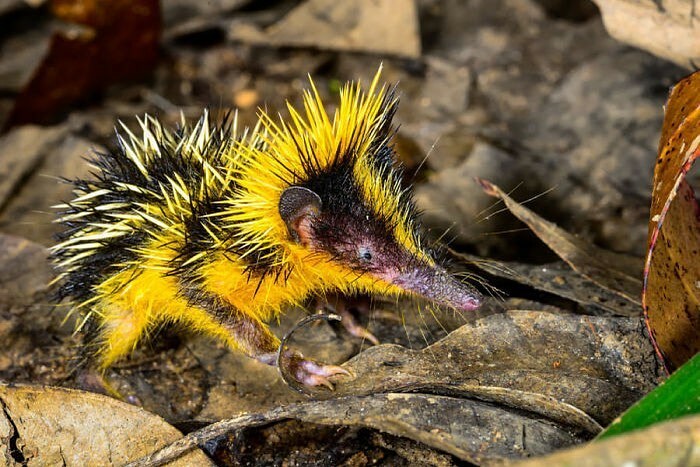
Image credits: strangest_wildlife
#17 Mexican Salamander(Axolotls) Or A Mexican Walking Fish, Is A Neotenic Salamander, Closely Related To The Tiger Salamander
Although the axolotl is colloquially known as a "walking fish", it is not a fish, but an amphibian. Axolotls are unusual among amphibians in that they reach adulthood without undergoing metamorphosis. Instead of developing lungs and taking to land, the adults remain aquatic and gilled. As of 2010, wild axolotls were near extinction due to urbanization in Mexico City and consequent water pollution. They are currently listed by CITES as an endangered species and by IUCN as critically endangered in the wild, with a decreasing population. Axolotls are used extensively in scientific research due to their ability to regenerate limbs. Axolotls were also sold as food in Mexican markets and were a staple in the Aztec diet.
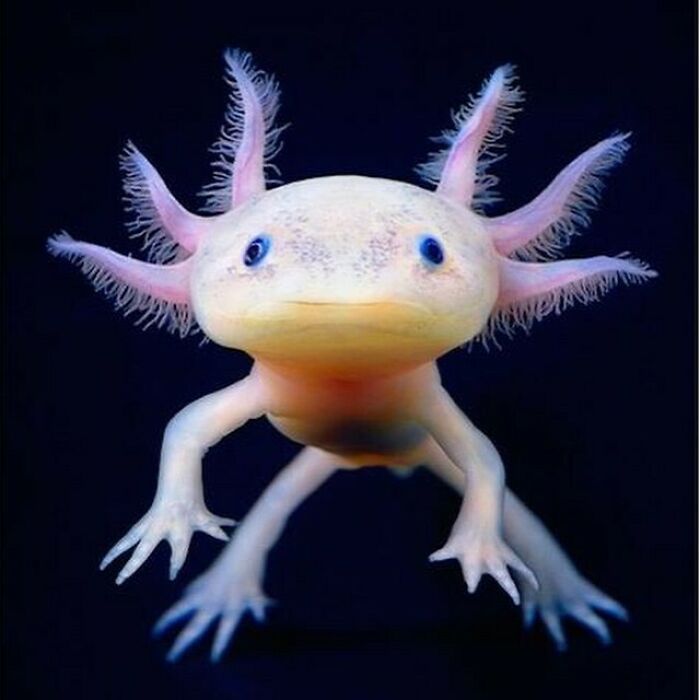
Image credits: strangest_wildlife
#18 The Capybara Is The Largest Rodent In The World
Close relatives are guinea pigs and rock cavies, and it is more distantly related to the agouti, chinchillas, and the coypu. Native to South America, the capybara inhabits savannas and dense forests and lives near bodies of water. It is a highly social species and can be found in groups as large as 100 individuals, but usually lives in groups of 10–20 individuals. The capybara is not a threatened species and is hunted for its meat, hide and also for a grease from its thick fatty skin which is used in the pharmaceutical trade.
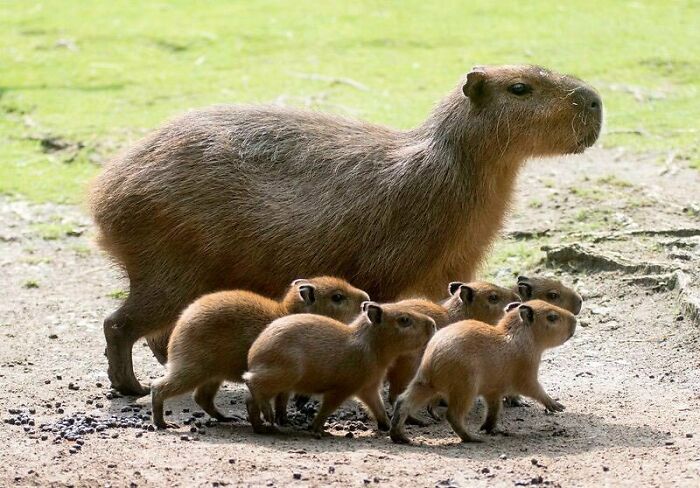
Image credits: strangest_wildlife
#19 Cute Or Strange?
The bat-eared fox is a species of fox found on the African savanna, named for its large ears, which are used for thermoregulation. Fossil records show this canid to first appear during the middle Pleistocene, about 800,000 years ago
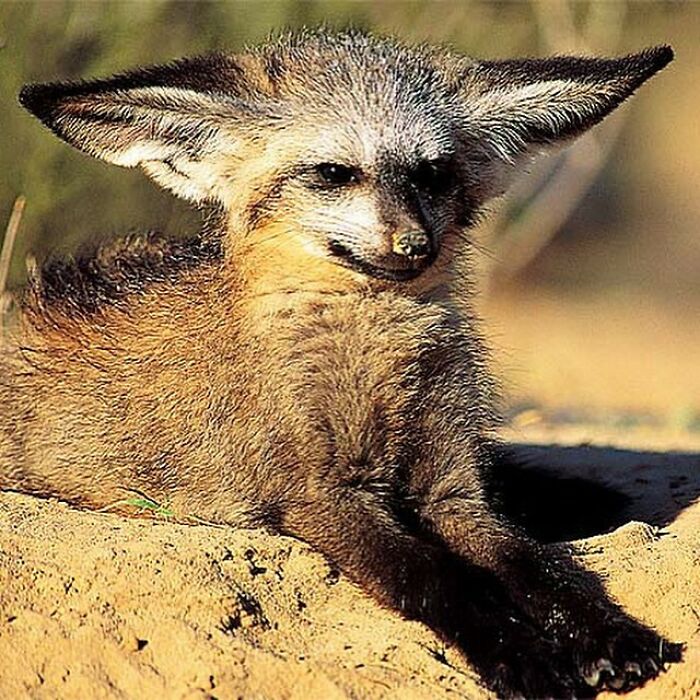
Image credits: strangest_wildlife
#20 The Emperor Tamarin, Also Known As The Brockway Monkey, (Saguinus Imperator)
Species of tamarin allegedly named for its resemblance to the German emperor Wilhelm II. It lives in the southwest Amazon Basin, in east Peru, north Bolivia and in the west Brazilian states of Acre and Amazonas. The fur of the emperor tamarin is predominantly grey colored, with yellowish speckles on its chest. The hands and feet are black and the tail is brown. Outstanding is its long, white mustache, which extends to both sides beyond the shoulders
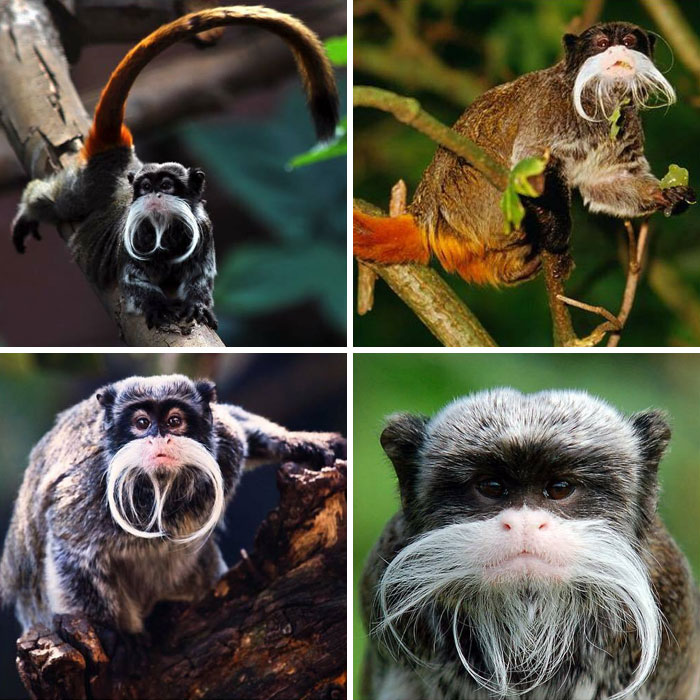
Image credits: strangest_wildlife
#21 A Salp (Plural Salps) Or Salpa (Plural Salpae Or Salpas) Is A Barrel-Shaped, Planktonic Tunicate
It moves by contracting, thus pumping water through its gelatinous body. Salp jet propulsion is one of the most efficient in the animal kingdom. The salp strains the pumped water through its internal feeding filters, feeding on phytoplankton
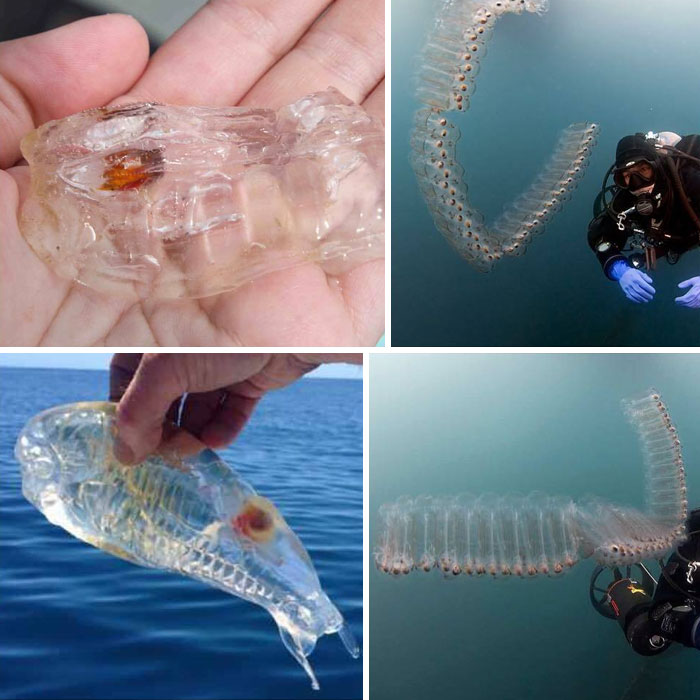
Image credits: strangest_wildlife
#22 The Angler Fish Is Perhaps One Of The Most Fascinating And Bizarre Sea Creatures Known To Man
Not only known for its wily predation techniques (re: possessing a spine that grows its own glowing fleshy mass, which the fish wiggles about to lure in other predatory sea creatures that it will ultimately devour), the angler fish’s mating habits are rather unique. When scientists first discovered the angler, for instance, they noticed that almost all of those observed were female…and that these specimens had what appeared to be some sort of parasitic growth attached to their lower parts. Turns out that those “parasites” were actually just greatly reduced male angler fish, whose puny size means that the male angler fish’s sole objective in life is to find and mate with a female. Once they do find a female partner, male anglers quickly bite into the female’s skin and thus fuse them together–so much so that all that is discernible of the male angler fish are two globular growths on the female’s skin: its gonads. From this point on, the male’s life literally depends on its female host, as they share a circulatory system. And, well, just about everything else. When the female is ready to mate, the male pays his dues by providing her with sperm on the spot so that she might impregnate herself
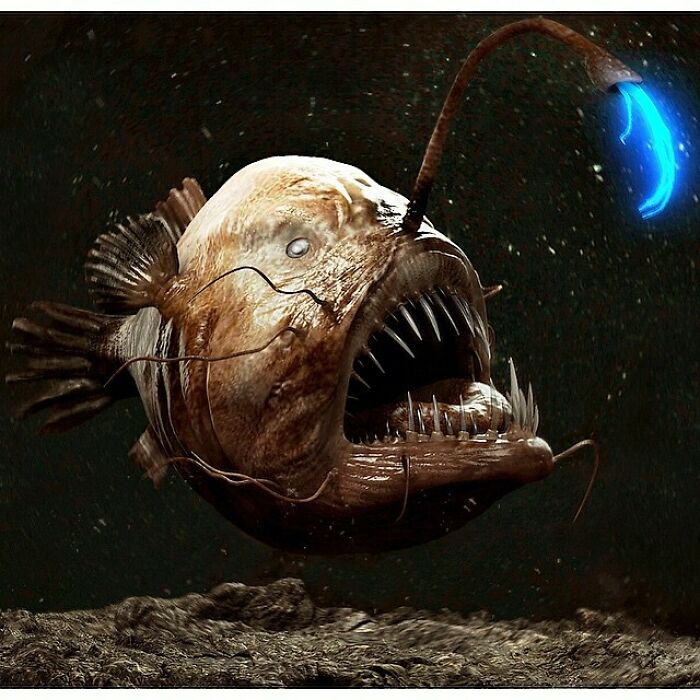
Image credits: strangest_wildlife
#23 The Red-Lipped Batfish Or Galapagos Batfish Is A Fish Of Unusual Morphology Found Around The Galapagos Islands And Off Peru At Depths Of 3 To 76 M (10 To 249 Ft)
Red-lipped batfish are closely related to rosy-lipped batfish, which are found near Cocos Island off the Pacific coast of Costa Rica. This fish is mainly known for its bright red lips. Batfish are not good swimmers; they use their highly adapted pectoral fins to "walk" on the ocean floor. When the batfish reaches maturity, its dorsal fin becomes a single spine-like projection (thought to function primarily as a lure for prey). Like other anglerfish, the red-lipped batfish has a structure on its head known as illicium. This structure is employed for attracting prey
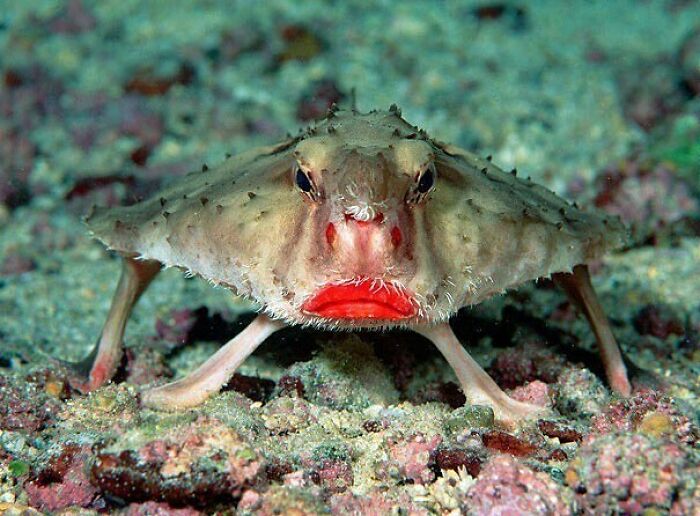
Image credits: strangest_wildlife
#24 The Aye-Aye Is A Lemur, A Strepsirrhine Primate Native To Madagascar That Combines Rodent-Like Teeth And A Special Thin Middle Finger To Fill The Same Ecological Niche As A Woodpecker
It is the world's largest nocturnal primate, and is characterized by its unusual method of finding food; it taps on trees to find grubs, then gnaws holes in the wood using its forward slanting incisors to create a small hole in which it inserts its narrow middle finger to pull the grubs out. This foraging method is called percussive foraging. The only other animal species known to find food in this way is the striped possum. From an ecological point of view the aye-aye fills the niche of a woodpecker, as it is capable of penetrating wood to extract the invertebrates within
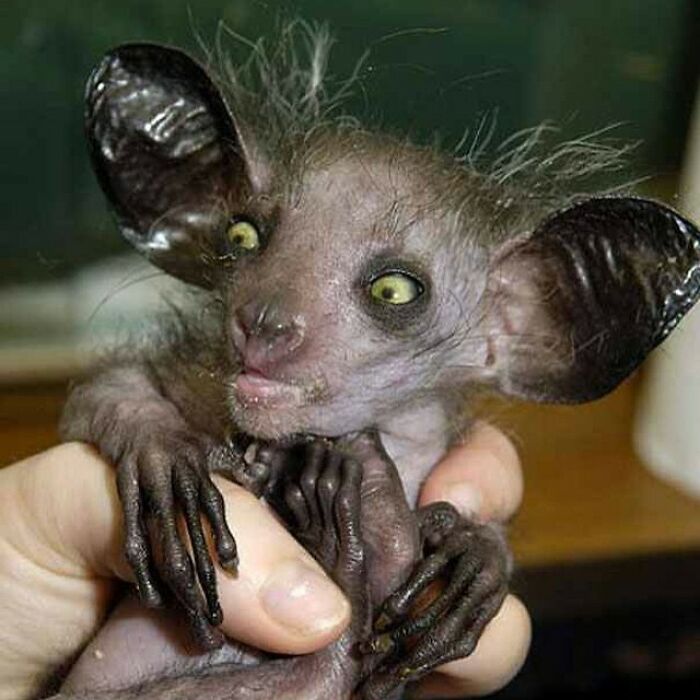
Image credits: strangest_wildlife
#25 Puss Mouth Catepillar: The Larvae Of The Puss Moth Caterpillar Is Said To Resemble A Persian Cat, Contributing The “Puss” To The Name Of This Intimidating Caterpillar
If the off-putting appearance of this insect were not enough, it also happens to be one of the most toxic caterpillars in North America
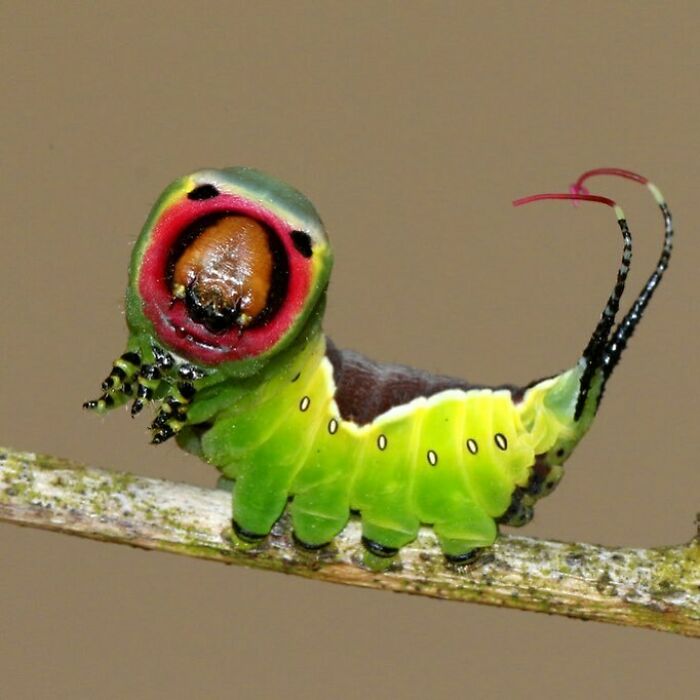
Image credits: strangest_wildlife
#26 The Venezuelan Poodle Moth
Very little is known about this moth but it is a possible new species of moth discovered in 2009 by Dr. Arthur Anker of Bishkek, Kyrgyzstan, in the Gran Sabana region of Venezuela. It bears similarities to the Muslin Moth, but most likely belongs to the lepidopteran genus Artace
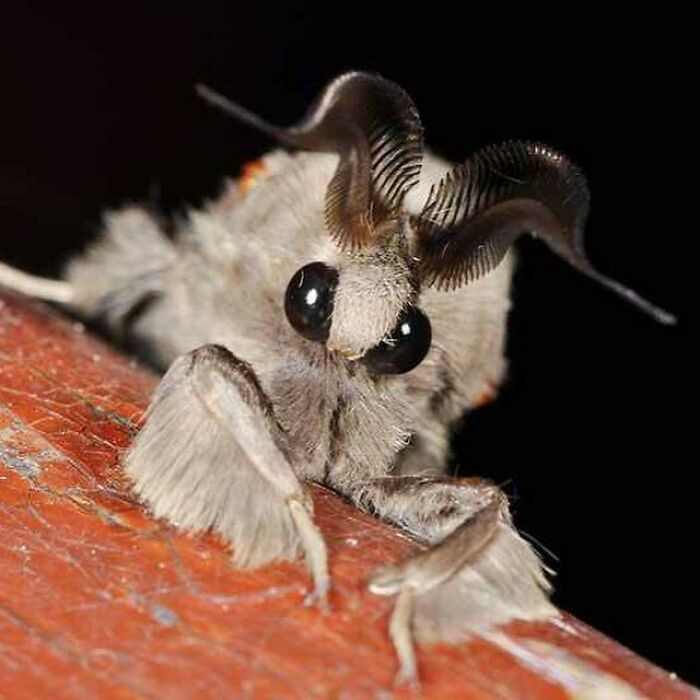
Image credits: strangest_wildlife
#27 The Tufted Deer Is A Small Species Of Deer Characterized By A Prominent Tuft Of Black Hair On Its Forehead And Fang-Like Canines For The Males
It is a close relative of the muntjac, living somewhat further north over a wide area of central China northeastern Myanmar and have been recently seen in Afghanistan after it last appearance 60 years ago. Although suffering from overhunting and habitat loss, this deer is not considered to be endangered. It is restricted to forested mountain habitat up to 4500 m above sea level, making study difficult
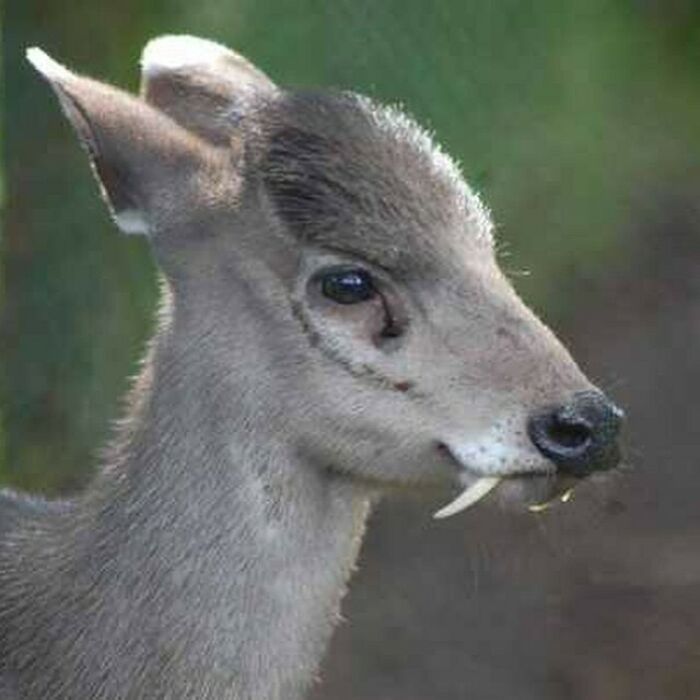
Image credits: strangest_wildlife
#28 Flower Mantises Are Those Species Of Praying Mantis That Mimic Flowers
Their coloration is an example of aggressive mimicry, a form of camouflage in which a predator's colours and patterns lure prey. Most species of flower mantis are in the family Hymenopodidae. Their behaviour varies, but typically involves climbing a plant until they reach a suitable flower, and then staying still until a prey insect comes within range. Many of these mantises have deimatic displays to startle or put off potential predators
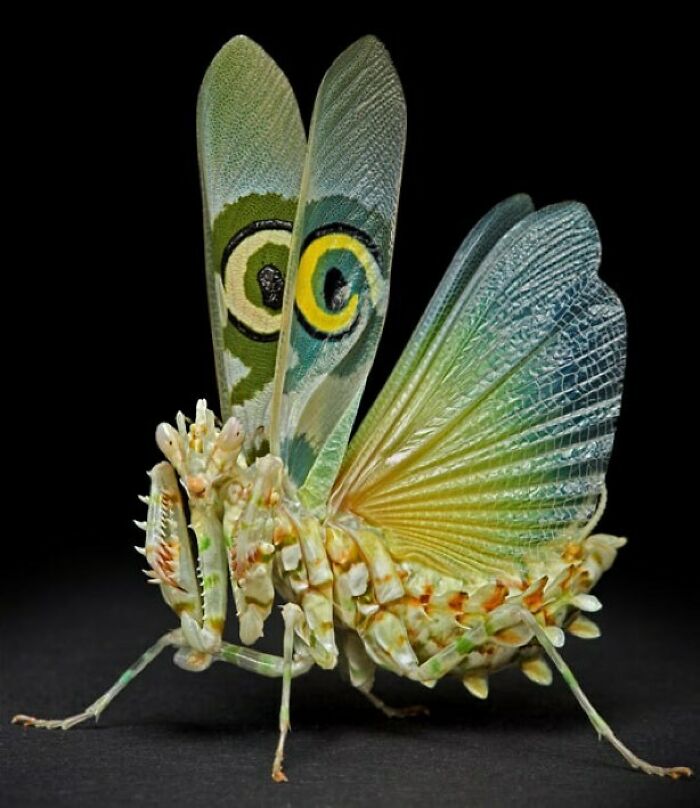
Image credits: strangest_wildlife
#29 The Thorny Dragon Or Thorny Devil Is An Australian Lizard, Also Known As The Mountain Devil, The Thorny Lizard, Or The Moloch
This is the sole species of genus Moloch. The thorny devil grows up to 20 cm (8.0 in) in length, and it can live for up to 20 years. Most of these lizards are coloured in camouflaging shades of desert browns and tans. These colours change from pale colours during warm weather and to darker colours during cold weather. These animals are covered entirely with conical spines that are mostly uncalcified
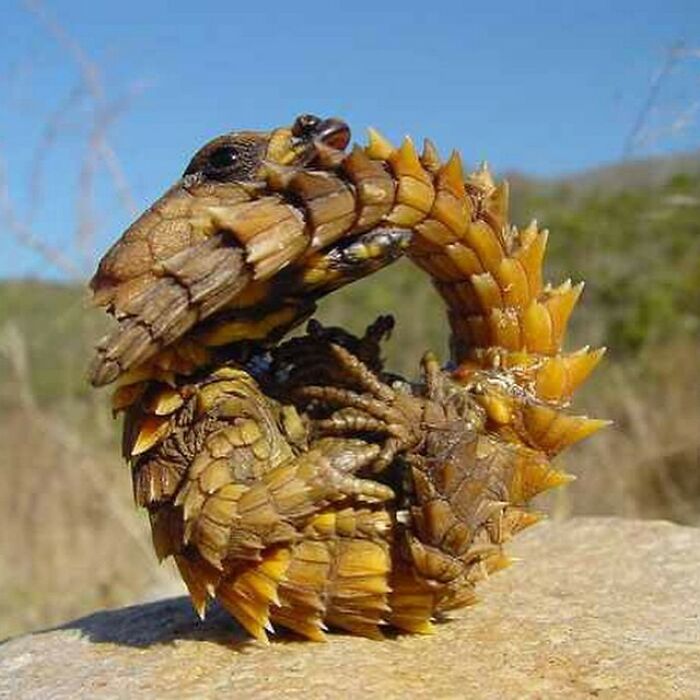
Image credits: strangest_wildlife
#30 The Atlantic Wolffish Is Also Known As The Seawolf, Atlantic Catfish, Ocean Catfish, Devil Fish, Wolf Eel
Numbers of the Atlantic wolffish are diminishing rapidly thought to be due to overfishing, they live in cold waters and have a natural antifreeze in their blood
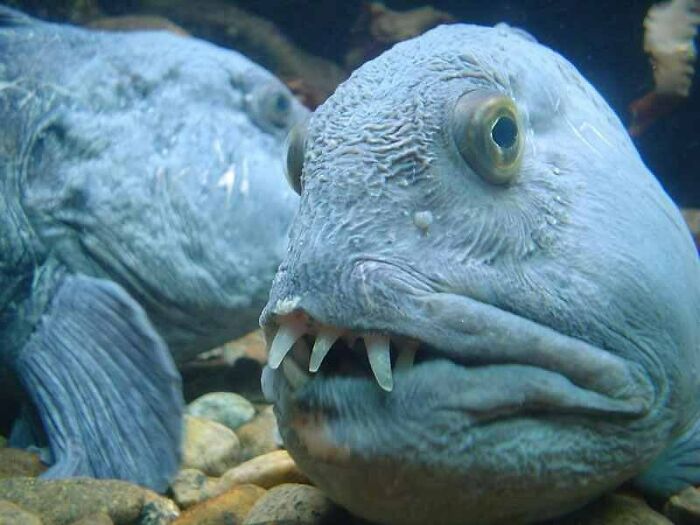
Image credits: strangest_wildlife

Leave a comment